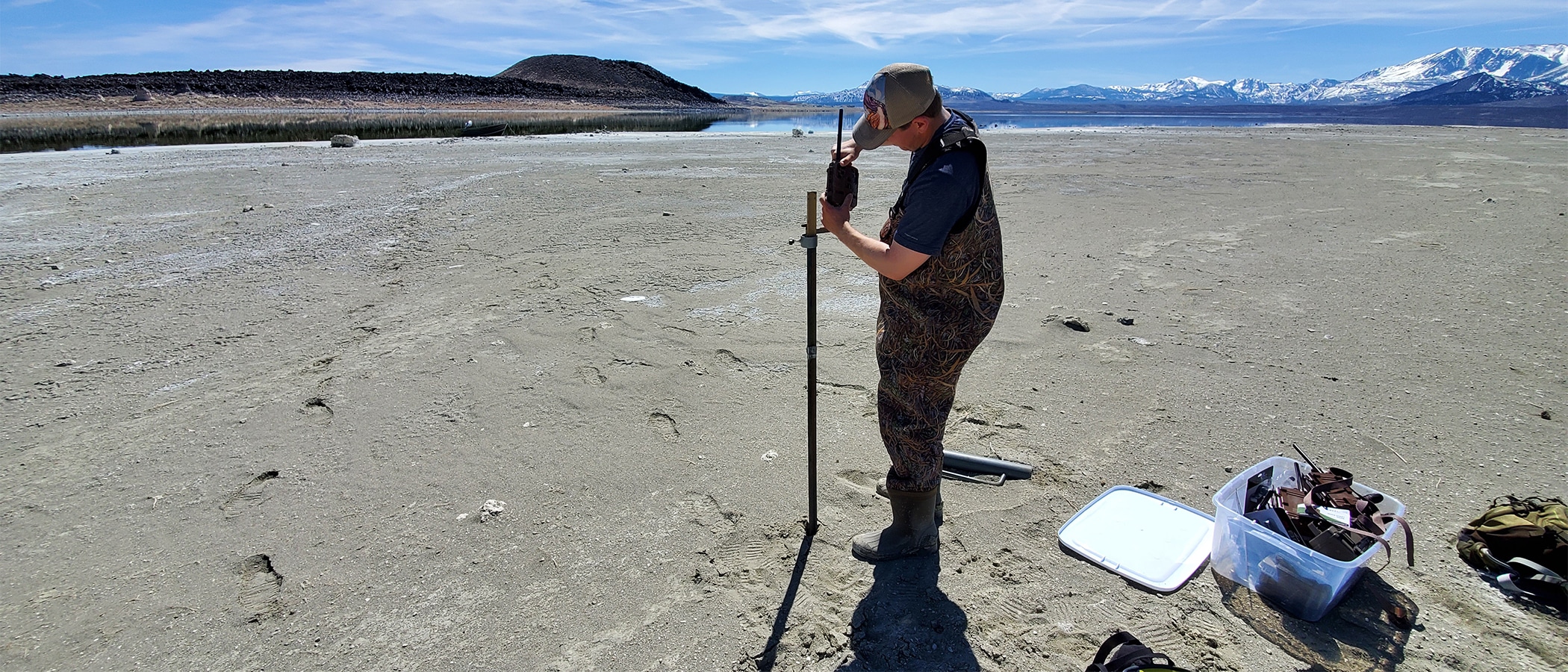
Each autumn Mono Lake Committee staff optimistically hope for a wet and snowy winter, but cautiously prepare for drought. Last fall, drought contingency planning included the possibility of re-deploying the mile-long temporary electrified fence to protect California Gulls; no small feat to be sure.
Each spring tens of thousands of California Gulls migrate inland to Mono Lake’s islets to nest, making Mono Lake host to one of the three largest California Gull breeding colonies in the world. However, when Mono Lake’s elevation drops, a landbridge begins to form, making the nesting grounds accessible to coyotes. The worst instance of this occurred in 1977 after decades of excessive water diversions to Los Angeles lowered the lake far enough that coyotes were able to access Negit Island, the black volcanic island that was the former nesting habitat for the California Gull. The gulls have avoided nesting on Negit ever since and have instead nested on smaller, adjacent islets.
Full-fledged fence five years ago
The islets, surrounded by slightly deeper water, are safer from the threat of coyotes than Negit, but with Mono Lake still 12 feet shy of the California State Water Resources Control Board’s mandated management level, the Committee remains vigilant. That’s why in 2017 the Committee designed, implemented, and maintained a mile-long electrified gull protection fence. Wildlife cameras installed along the fence documented coyotes stalking the fence line, but none made it out to the nesting gulls.
The 2017 gull protection fence was a hugely successful effort made possible thanks to California State Park’s partnership, 228 individual donors who funded the fence materials as part of a crowdfunding campaign, as well as the support of the Committee’s 16,000 members.
The winter of 2016–2017 was one of the snowiest winters in recorded history, which meant the fence had to be moved several times as the lake rose nearly three feet during the April to August nesting season. But last fall when Committee staff began planning for a potential re-deployment of the fence, we knew, thanks to our lake model projections, that this year was going to be a close call.
Out of caution, we pulled the fence equipment out of storage, conferred with California Gull biologists from Point Blue Conservation Science, worked with California State Parks to update the fence permit, and mapped out a fence route. It wasn’t until the eleventh hour in mid-March that we were able to determine that the lake would stay close enough to 6380 feet above sea level during the nesting season, and that the fence would not be needed. The 6380′ elevation has been identified by California Gull researchers as a conservative “lowest lake elevation” that effectively protects the gulls from coyotes.
Monitoring and assessing coyote problems
Instead of deploying the fence, Committee staff installed a temporary network of motion detection wildlife cameras that monitor coyote activity via wirelessly transmitted images. We are happy to report that so far, no coyotes have been observed on the landbridge.
While we closely monitor the coyote threat in 2022, our lake level forecasts suggest that unless next winter proves to be one of the wettest winters on record, we will have to deploy the fence in early 2023. With permits and equipment lined up, our fall contingency planning process will be rather straightforward—a small consolation in the face of the grim prospect of an even lower lake level. Until we get Mono Lake significantly closer to the healthy management level mandated by the State Water Board, the Committee will have to stay ready to implement these kinds of stop-gap measures.
This post was also published as an article in the Summer 2022 Mono Lake Newsletter. Top photo by Bartshe Miller.
